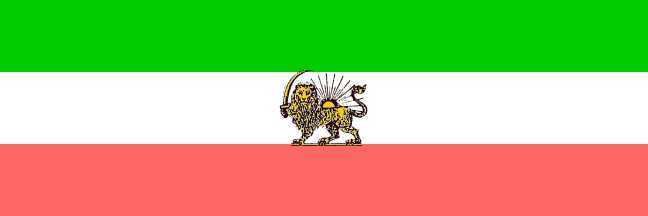4 Oct – Nov 1921 (acting) Mahmoud Khan Nowzari Established April 1921 Founded 1921 | Government Military occupation 16 Nov 1921 Ismail Khan Bahador Area 388,332 km² Date dissolved 1921 | |
 | ||
2 Apr – 3 Oct 1921 Mohammad Taqi-Khan Pesyan | ||
The Autonomous Government of Khorasan was a short-lived military state set up in what is now Iran. It was formally established on the April 2, 1921 and collapsed a few months later, on October 6, 1921. The area administered by the state was approximately 388,332 square kilometres and its capital was Mashhad.
Contents
State information
Military Governor-General
Other senior government officials
a. From 24 August to 3 October.
b. Until 24 August.
c. Also known as "Aghazadeh".
Establishment
On April 2, 1921, Colonel Pesyan, Chief of Gendarmerie of Khorasan has Ahmad Qavam the Governor-general of Khorasan toppled in a military coup and has him arrested and sent to Tehran. Qavam and several other dominant figures in Khorasan were charged with Tax evasion charges which evidence were provided to Pesyan by a Belgian named Dubois who was Director of Revenue in Khorasan.
While Qavam was in prison in Tehran, Pesyan instated himself as Governor-general of Khorasan and ruled Khorasan autonomously even though he was a supporter of Seyyed Zia'eddin Tabatabaee the Prime Minister of Persia.
In May 1921, Qavam is freed from prison and Tabatabaee is no longer Prime Minister. Qavam becomes Prime Minister and plans to take revenge on Pesyan. As of May 30, 1921 Pesyan declares that Khorasan is fully Autonomous and he establishes the National Committee of Khorasan or Komitey-e Melli-e Khorasan in Persian. The committee starts a program of plans and reforms, however they face some fierce opposition by some tribal and religious leaders.
Plans
Commenced between 2 April to 25 May
Commenced between 26 May to 6 Oct
Battles
Several tribal leaders who had lost most of their wealth and belongings due to Pesyan's reform programs were supported by Qavam's government. Therefore, on August 11, 1921 the first battle took place between a detachment of Gendarmes in a village near Kariz on Afghanistan border and forces of Hazara chief Shuja al-Mulk. Gendarmes defeated and fled to Mashhad. This defeat results in appointment of Shawkat al-Dowlah a rival of Shuja al-Mulk as Governor of Torbat-e-Jam with a task to deal with disturbances and a sending of strong numerous gendarme forces on August 20, 1921.
In September, 1921 Gendarme forces from Kariz, Torbat-e-Jam, Torbat-e Heydarieh defeated the strong tribal confederatory force of Hazara, Baluch, Barbari and Qarai Turks, whose leaders were Shuja al-Mulk, Seyed Heydar Barbari, Salar Khan Baluch, Mir Ali Ahmad Barbari, Ibrahim Khan Baluch and Jafar Khan Qaraei in a battle which took place in Bakharz. Shuja fled to Afghanistan and the tribal disturbances in the south-east were stopped.
October 3, 1921 Pesyan himself took battle leading his 150 Gendarmes to fight a Kurdish coalition tribal force which had more than 1,000 men, led by Sardar of Bojnurd and Taj Mohammad Khan of Quchan, who were also financially and militarily aided by the British and Persian government of Ahmad Qavam. Pesyan fought bravely with only 60 bullets, however he and his small force were circled by the Kurds and were martyred. Pesyan's head was cut off as proof of his death and sent to Qavam.
Collapse
After Pesyan's death, the committee was no longer united. A new rivalry started between Nowzari and Ismail Khan Bahador, who were Pesyan's partisans. Nowzari managed to take charge of Khorasan and he surrendered to Persia's government. In November, 1921 a strong military force of Gendarmes and Cossacks arrived in Mashhad and handed the administrative duties to the newly appointed Governor-General of the province.
